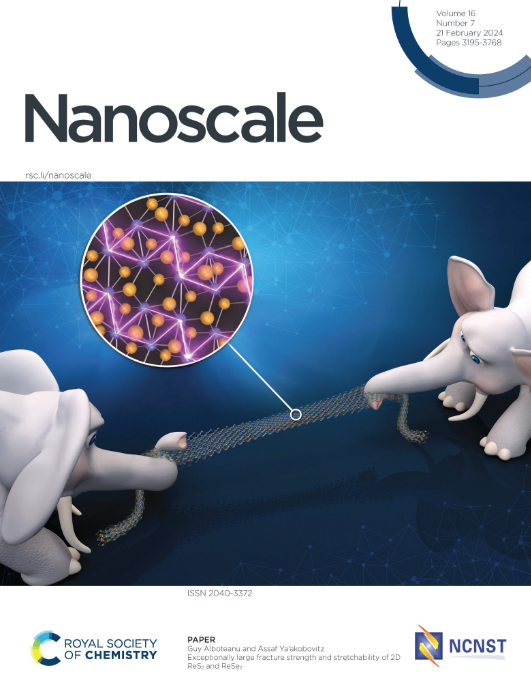~ 超低晶格热导率带来的可持续三维铜镍互连纳米网络的 5 倍热电功勋值
IF 5.8
3区 材料科学
Q1 CHEMISTRY, MULTIDISCIPLINARY
引用次数: 0
摘要
本文章由计算机程序翻译,如有差异,请以英文原文为准。
~ 5-fold Thermoelectric Figure of Merit of Sustainable 3D-CuNi Interconnected Nanonetworks due to Ultralow Lattice Thermal onductivity
The pursuit of efficient thermoelectric materials, particularly those composed of low-toxicity and earth-abundant elements, has intensified in recent years. This study introduces an approach to increase the thermoelectric properties of CuNi alloys through the synergistic application of two nanostructuring techniques: the incorporation of saccharine in the electrolyte to achieve a crystallite size reduction to 23-26 nm, and the utilization of three-dimensional (3D) anodic aluminum oxide (3D-AAO) templates to fabricate nanowires networks. For comparison purposes we successfully electrodeposited CuNi films, one-dimensional (1D) nanowire arrays, and modulated nanowire arrays, together with 3D-nanonetworks, maintaining a consistent composition of Cu0.60Ni0.40 across all samples. Notably, while the electrical conductivity and Seebeck coefficient remained consistent between the nanocrystalline CuNi films and the 3D-nanonetworks, a significant reduction in thermal conductivity was observed, decreasing from 29 W/m·K for the bulk material, to 10.9 ± 1.1 W/m·K for nanocrystalline films, to 5.3 ± 0.5 W/m·K for the 3D-nanonetworks, and to 4.9 ± 0.6 W/m·K for free-standing 3D CuNi nanonetworks. This reduction is attributed to enhanced phonon scattering within the 3D architecture together with the nanocrystalline size inside the nanowires. The figure of merit (zT) exhibited an impressive increase of more than four times (4.4) for 3D-CuNi nanonetworks within AAO templates, and of 4.8 time for free-standing 3D-CuNi nanonetworks, when compared to bulk. Our findings underscore the potential of dual nanostructuring strategies to optimize the thermoelectric performance of environmentally friendly, stable, and abundant materials like CuNi, paving the way for advancements in sustainable energy technologies.
求助全文
通过发布文献求助,成功后即可免费获取论文全文。
去求助
来源期刊

Nanoscale
CHEMISTRY, MULTIDISCIPLINARY-NANOSCIENCE & NANOTECHNOLOGY
CiteScore
12.10
自引率
3.00%
发文量
1628
审稿时长
1.6 months
期刊介绍:
Nanoscale is a high-impact international journal, publishing high-quality research across nanoscience and nanotechnology. Nanoscale publishes a full mix of research articles on experimental and theoretical work, including reviews, communications, and full papers.Highly interdisciplinary, this journal appeals to scientists, researchers and professionals interested in nanoscience and nanotechnology, quantum materials and quantum technology, including the areas of physics, chemistry, biology, medicine, materials, energy/environment, information technology, detection science, healthcare and drug discovery, and electronics.
 求助内容:
求助内容: 应助结果提醒方式:
应助结果提醒方式:


